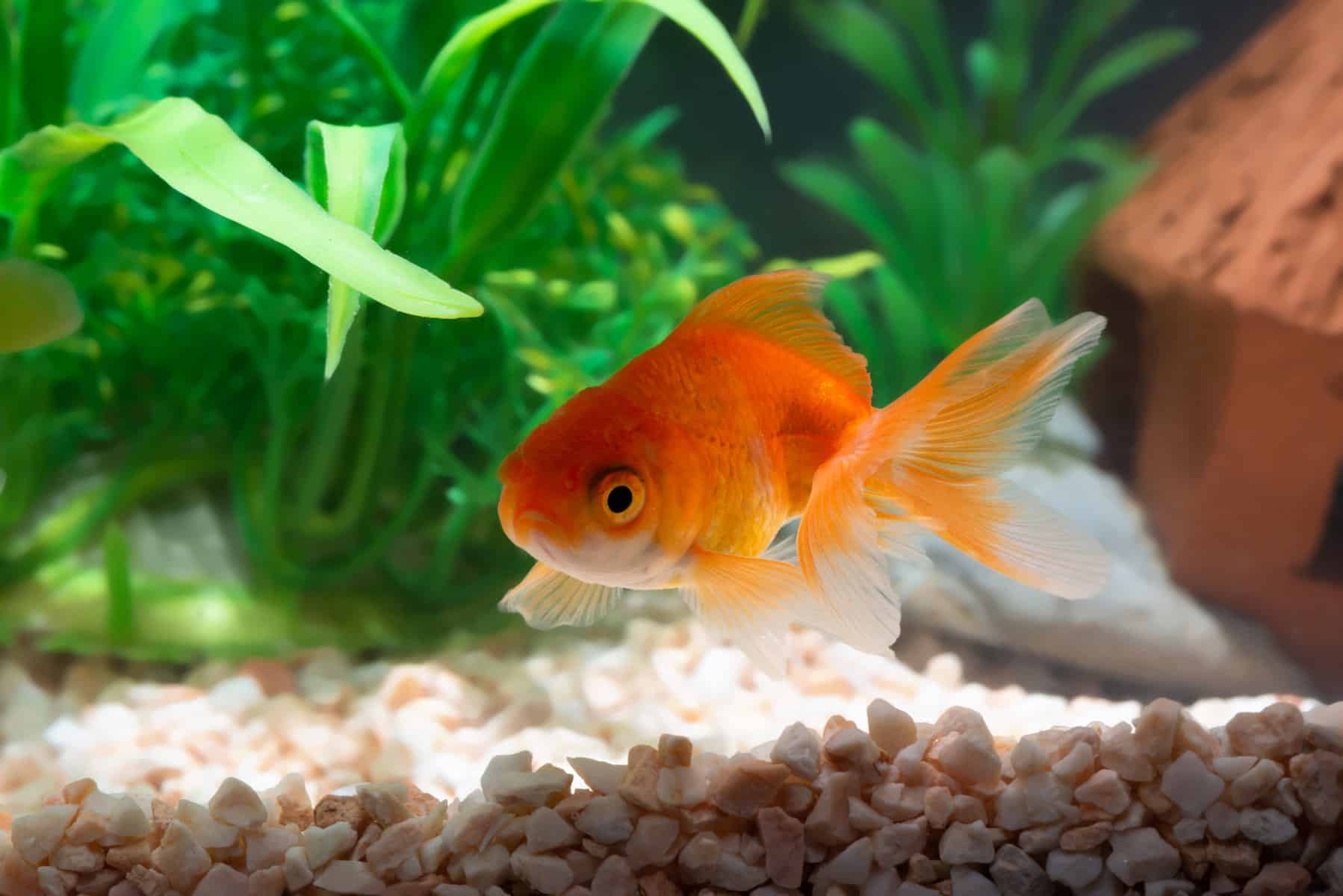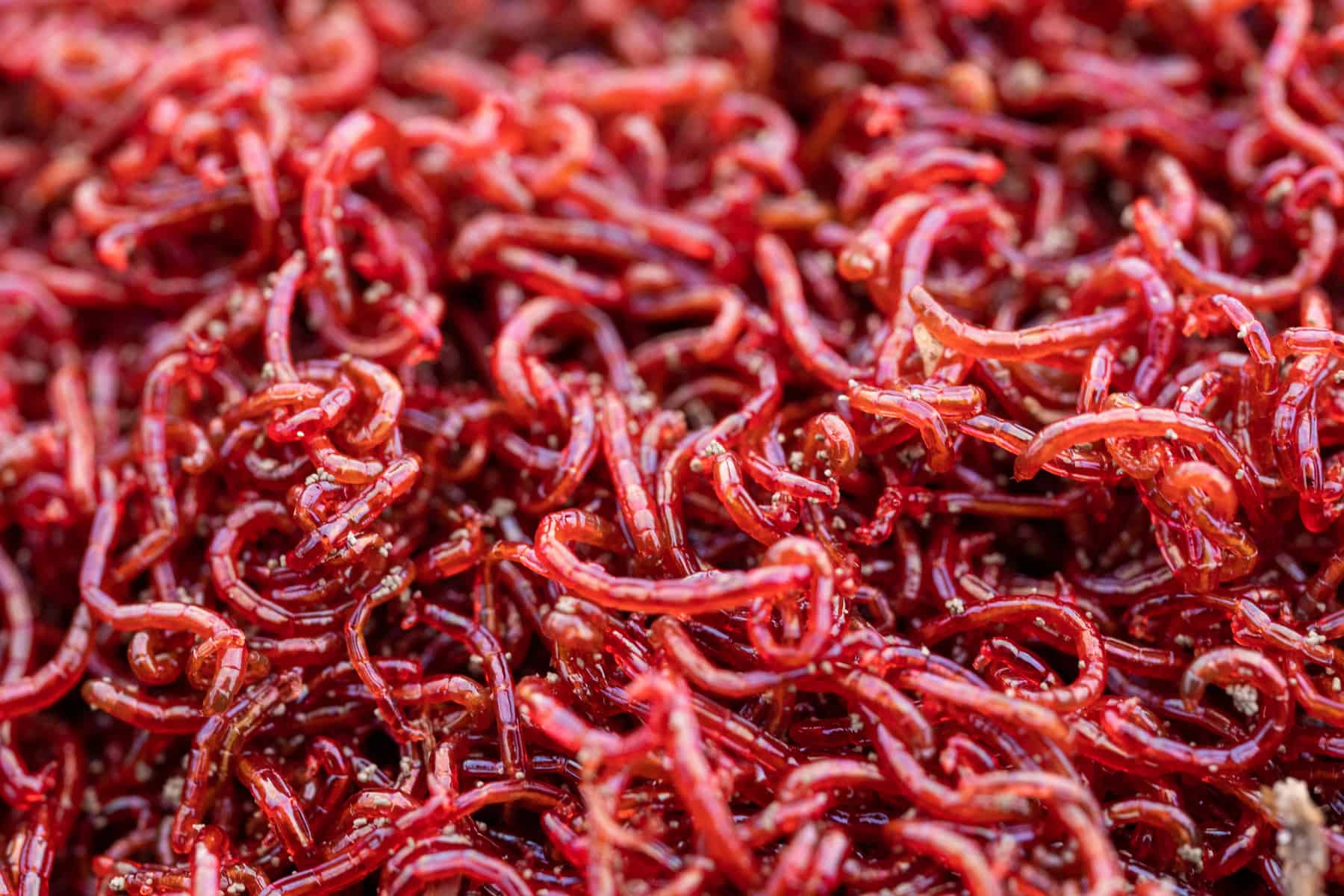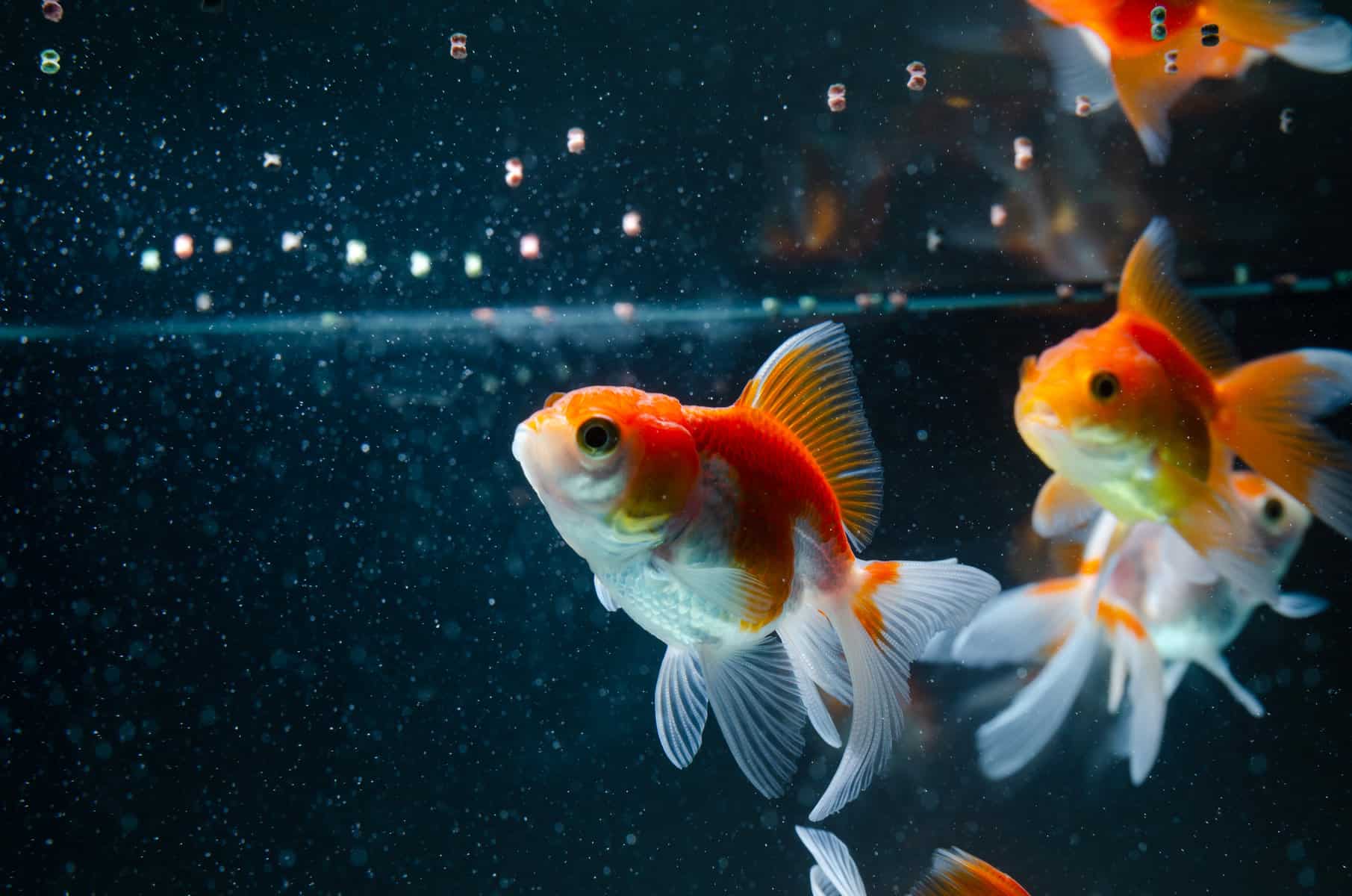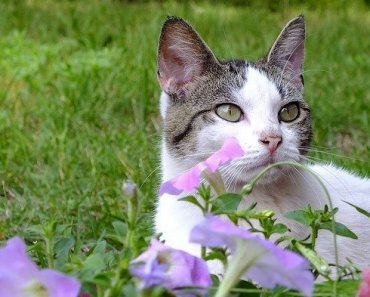Goldfish will thrive and grow well if they are fed a nutritious, high-quality, balanced diet.
So, what do goldfish like to eat? Are goldfish carnivores? And can goldfish eat bloodworms?
Well, goldfish are omnivores that enjoy a varied diet that can include bloodworms and other similar foods.
Read this guide to learn everything you need to know about the pros and cons of feeding your goldfish bloodworms.
Can My Goldfish Eat Bloodworms?
Yes, in moderation, bloodworms can make an excellent addition to your goldfish’s regular diet.
However, you shouldn’t overfeed this meaty treat, as that can cause problems for your fish.
What Do Goldfish Eat?

Goldfish are omnivores. That means they enjoy a diet of plant matter, algae, and some meaty protein.
In fact, goldfish are extremely greedy fish that will eat pretty much anything that will fit into their mouths. So, you might think that feeding goldfish is easy. But that’s not necessarily the case.
Although some people have slim-bodied varieties of goldfish as pond fish, together with Koi, Orfe, and the like, most hobbyists keep fancy goldfish indoor tanks.
Goldfish are generally hardy fish that can withstand many of the usual newbie mistakes made by beginners to the hobby. However, these fish do require a balanced, high-quality diet to remain healthy, grow properly, and thrive.
Protein
Goldfish need an amount of protein in their diet to fuel healthy growth and development.
Juvenile goldfish deprived of sufficient protein can suffer from stunted growth and skeletal abnormalities. They can even have a much-reduced life expectancy.
Some of that protein must come from a meat-based source. Except in a few cases where pet goldfish have been released by their owners, goldfish do not exist in the wild environment.
However, goldfish of all varieties are closely related to the Prussian Silver carp.
Carp eat insect larvae, water-bound flies, small crustaceans, and worms that they find in their habitat, together with some plant matter and algae. Captive-bred goldfish enjoy similar dietary requirements to their wild cousins.
Staple Diet
Your goldfish should enjoy a staple diet of commercially produced goldfish flakes or pellets with some meaty protein and fresh veggies for variety.
Fancy goldfish food is formulated to prevent common digestive disorders such as bloat and constipation, which often lead to buoyancy problems.
By offering your fish a couple of helpings of bloodworms each week, you can help to keep things moving through the fish’s digestive system.
Blanched zucchini, cucumber, lettuce, skinned peas, and the like can also be added to your fishy friends’ ration as a weekly treat. The fish will also happily graze on any algae that they can find in the tank.
What Are Bloodworms?

So, now you know that your goldfish can eat bloodworms as part of their regular diet. But what are bloodworms?
Bloodworms belong to a group of polychaetes that inhabit the bottom of marine lakes. The worms are actually the larvae of a species of midge fly and are a deep red color, as their name suggests. The worms feed on decaying organic waste, sludge, and general detritus.
Bloodworms were first used as food for aquarium fish thanks to a fisherman who used the worms as bait when fishing for marine fish.
Hobbyists quickly realized that the worms made an appetizing, nutritious snack for their pet aquarium fish, and bloodworms quickly became a staple of most pet fish’s diets.
What Are The Different Types of Bloodworms For Goldfish?
Bloodworms come in three processed forms for feeding to aquarium fish:
- Live
- Frozen
- Freeze-dried
Each form of bloodworm must be prepared slightly differently before you can feed them to your fish.
Live Bloodworms
First of all, we must stress that you must never take bloodworms (or any other form of live food) from the natural environment. That’s because you could finish up accidentally importing diseases or parasites into your fish tank with the food or the water it comes in.
Unfortunately, the bloodworms you can buy in a pet shop are usually supplied in a plastic bag. The worms are often a few days old and not especially healthy.
In addition, pet store worms can also carry diseases. However, bloodworms make a great treat for goldfish if you can find a reliable supplier.
Are Live Bloodworms Dangerous To Your Goldfish?
Provided they’re disease-free, live bloodworms won’t harm your goldfish.
Bloodworms have four fangs in their mouth that they use to fasten themselves onto their prey, producing a stinging venom. So, in theory, bloodworms can bite your fish.
However, there are some steps you can take to prevent the bloodworms from biting your goldfish.
- Wear rubber gloves when handling live bloodworms; you could get bitten!
- Always choose bloodworms from a reliable, reputable source.
- Put the worms in a shallow dish of water.
- Pick up a bloodworm using tweezers.
- Take a sharp pair of scissors and cut off the sharp tip of the worm’s head. Alternatively, you can use your fingers to squash the top of the bloodworm’s body.
- Ideally, the bloodworms should still be moving when you feed them to your goldfish.
Now you can offer the prepared bloodworms to your goldfish by simply dropping the worms into the tank.
If you decide to feed your goldfish live bloodworms, note that you’ll need to keep the worms in a sealed plastic container in your fridge. That’s because, after 10 to 12 days, the worms will turn into midge larvae if stored at room temperature.
Freeze Dried Bloodworms
As you can see, feeding live bloodworms correctly can be a hassle and potentially hazardous for your goldfish. So, you might prefer to feed your fish freeze-dried bloodworms instead.
Freeze-dried bloodworms are much easier to store than the live version. Keep the worms in an airtight container and store them in a cool, dry place.
The main downside to using freeze-dried bloodworms is that they are not as nutritionally valuable as live or frozen ones.
Preparing Freeze-Dried Bloodworms
Fancy goldfish are prone to digestive problems, especially constipation. That can affect the fish’s ability to swim upright on an even keel. If you feed freeze-dried bloodworms straight from the container, you risk causing problems for your goldfish.
How so?
Well, when the bloodworms get wet, they expand and swell. So, if your fish eats a lot of dry worms, the treat will swell up in the fish’s intestines, causing a blockage.
To prevent that problem, you should take a few worms and soak them in a little aquarium water before offering them to your fish.
That allows the worms to rehydrate and soften before the fish eat them. Ideally, you should soak the worms for at least 10 minutes before feeding them to your goldfish.
Once the worms are soaked, pop them into your fish tank for your goldfish to enjoy.
Frozen Bloodworms
Frozen bloodworms are the most convenient way to store and feed this nutritious treat to your goldfish.
Unlike freeze-dried bloodworms, the frozen variety retains more nutritional content. Frozen bloodworms are supplied in individual cubes or large sheets in convenient blister packaging that you store in your freezer.
Frozen bloodworms are typically good for six months when correctly stored in a domestic freezer.
Preparation
You’ll need to thaw frozen bloodworms before offering them to your fish, allowing roughly half a cube per goldfish. To thaw the bloodworms, simply put them into a small container of aquarium water.
When the bloodworms are completely defrosted, tip them into your aquarium for your goldfish to gobble up!
What Are The Pros And Cons Of Bloodworms For Goldfish?

There are pros and cons to including bloodworms in the goldfish diet.
Benefits Of Feeding Bloodworms To Your Goldfish
There’s no doubt that goldfish love bloodworms, and feeding these wriggly critters to your fishy friends has several benefits, too.
Good Source Of Protein
As mentioned earlier, goldfish are omnivores, eating a variety of plant-based essential nutrients and animal-sourced proteins.
Bloodworms provide a good protein source and contain fats and iron, making them a nutritious addition to a balanced diet.
Encourage Natural Behavior
Remember, goldfish are descended from wild carp. Wild carp hunt and feed on small crustaceans, insects, mosquito larvae, and worms that they hunt and catch.
So, although goldfish are not highly predatory creatures, they do enjoy hunting live prey when they’re presented with the opportunity in a pond or a fish tank.
Adding a few live bloodworms to your goldfish tank will encourage the fish to exercise more and provide them with some mental stimulation, too.
Stimulate Spawning Behavior
Offering your goldfish bloodworms can stimulate spawning behavior. That’s because wild carp typically breed when the water warms up during the late spring and early summer, and captive goldfish are the same.
In the carp’s wild environment, warmer weather means more food in the form of insects and their larvae. That abundance of food means higher survival rates for goldfish fry, so breeding is triggered.
If you keep goldfish in a garden pond, you’ll most likely see the goldfish spawning when spring arrives, and the weather gets warmer.
If you want to stimulate your captive goldfish to breed in the aquarium, you’ll need to increase the water temperature slightly and offer the fish a protein-rich diet, ideally containing live foods, such as bloodworms, daphnia, and the like.
Provides Variety
Goldfish are not fussy feeders, but they enjoy a varied diet containing both plant matter and meaty protein.
So, adding bloodworms to your fish’s ration provides the fish with something different and more interesting to eat than dried pellets or flake food.
Prevents Constipation and Swim Bladder Problems
As previously mentioned, round-bodied Fancy goldfish are prone to digestive issues, such as constipation, which also causes swim bladder disease.
By feeding your goldfish bloodworms, daphnia, krill, brine shrimp, and the like, once or twice a week, you can keep things moving through your fish’s system, preventing those digestive issues.
Downsides Of Feeding Bloodworms To Goldfish
Although bloodworms can be very good for your goldfish when fed in moderation, feeding these wriggly treats does have a few downsides.
Nutritional Deficiencies
Bloodworms are good for fat, iron, and protein. However, they don’t offer much else in the way of nutritional value for your fish.
Goldfish love bloodworms and that can make it very easy to overfeed them to your fish. Remember that bloodworms make a great addition to your goldfish’s diet, but that shouldn’t be at the expense of more balanced foods, such as commercially produced Fancy goldfish pellets.
High In Fat
Although goldfish need some fat in their diet, bloodworms tend to be very fat-dense. If you give your fish too much fat and insufficient fiber, the fish can develop bloating and constipation, potentially leading to swim bladder problems.
So, although bloodworms make an excellent addition to your fish’s diet when fed in moderation, take care not to overdo them at the expense of more balanced foods, such as goldfish pellets and flakes.
Parasite Risk
Although it’s safe to offer your goldfish frozen and freeze-dried bloodworms, live worms can carry a cargo of parasites and bacteria that you don’t want to introduce to your tank.
So, if you want to offer your goldfish live bloodworms, make sure you get them from a reliable source and never take any form of living food from the wild environment.
How Many Bloodworms To Feed Your Goldfish?
Giving your goldfish too many bloodworms is not good for your fish’s health. But how many bloodworms should you feed your fish?
Remember that overfeeding your goldfish with bloodworms can lead to a nutritional imbalance that’s potentially harmful to your fish.
In addition, uneaten bloodworms can disappear underneath plants and decorations in your aquarium, where they gradually rot, potentially causing water pollution and even leading to an ammonia spike.
How Often Should You Feed Bloodworms To Your Goldfish?
I feed my goldfish a small portion of frozen bloodworms three times each week in addition to their staple diet of Fancy goldfish pellets.
That ensures that the fish enjoy the benefits of bloodworms without overdoing things.
My fish have never experienced problems with that feeding level and are happy and healthy. In fact, my fish are now approaching their tenth year, so adding high-quality bloodworms to a balanced diet clearly suits them!
Final Thoughts
Did you enjoy our guide to feeding bloodworms to your beloved goldfish? If you did, please share the article before you go.
Bloodworms can make a nutritious, healthy snack or regular treat for both adult goldfish and goldfish fry.
We recommend feeding freeze-dried or frozen bloodworms unless you can obtain live worms from a reliable supplier and can be sure that the bloodworms are free from disease and parasites.
Do you feed your goldfish bloodworms? Tell us in the comments box below.


























